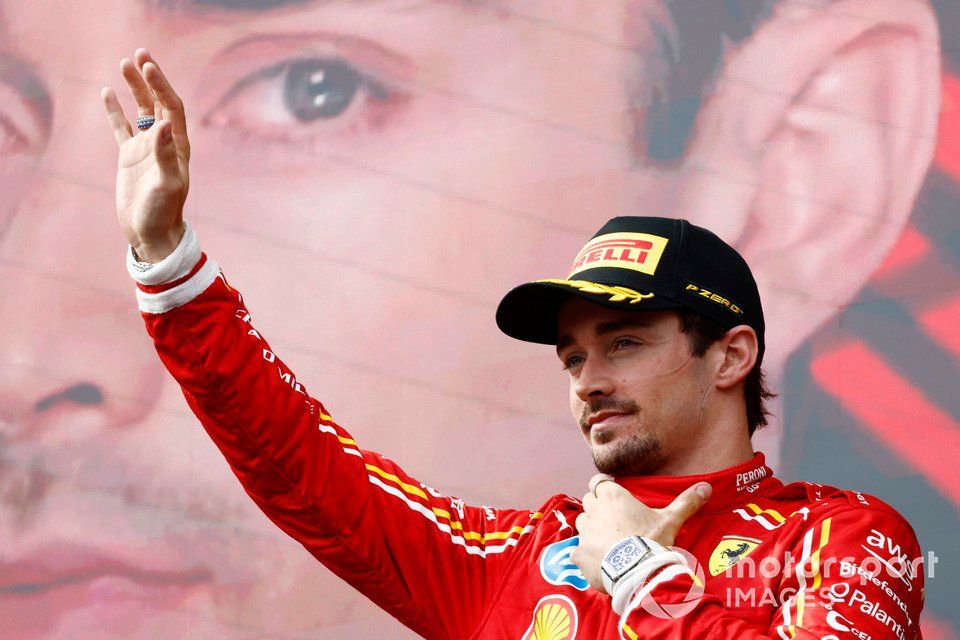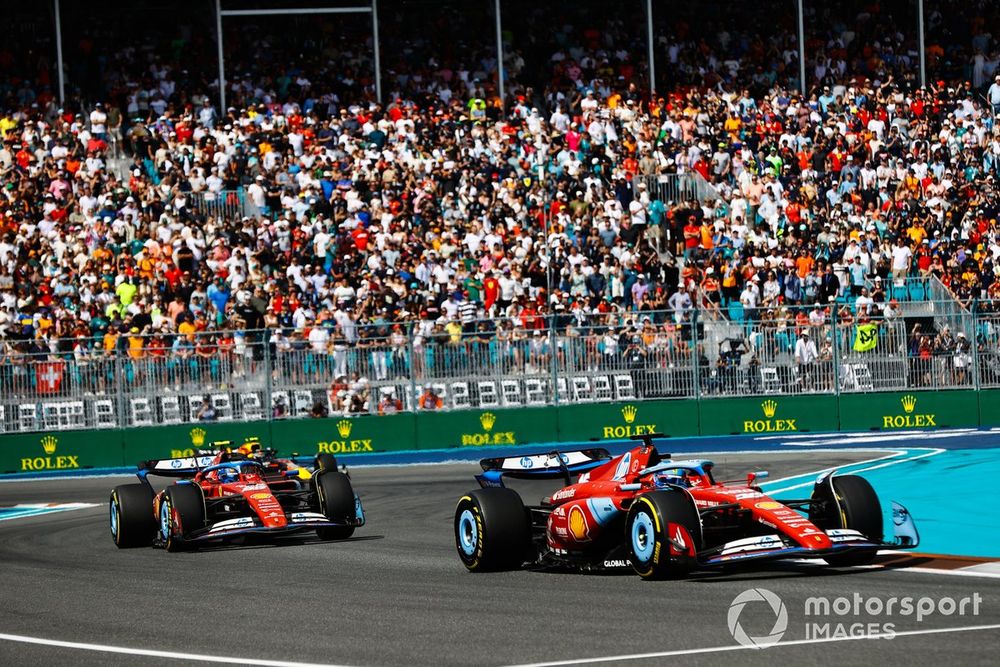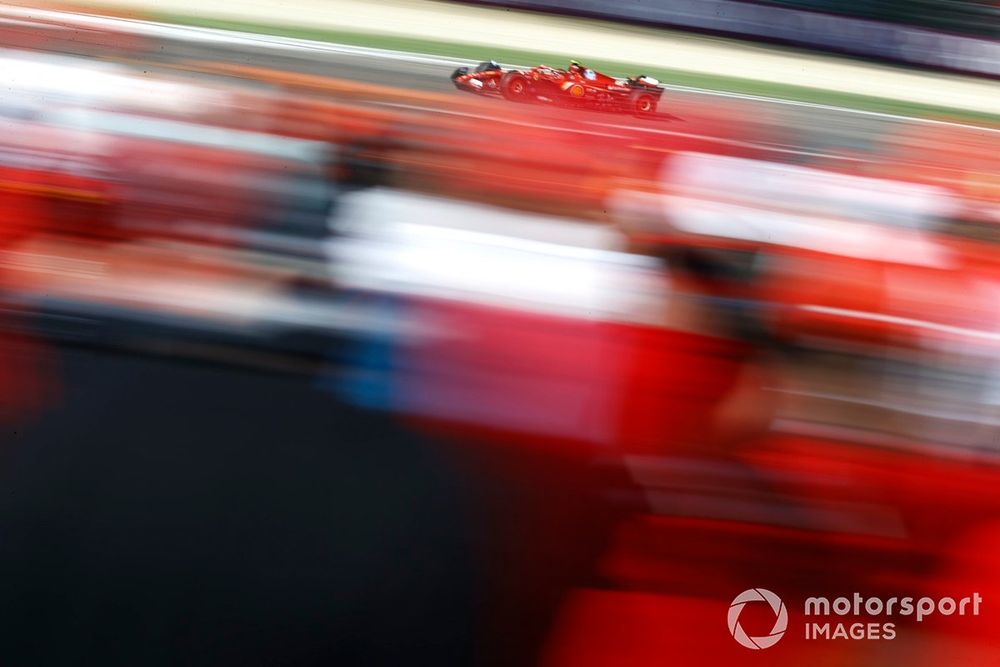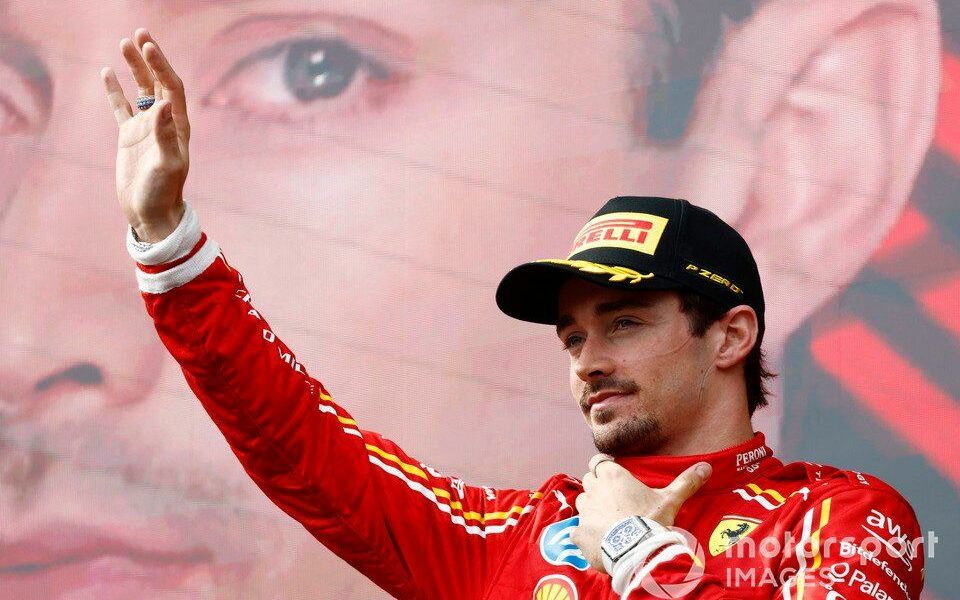For the Emilia-Romagna event, Ferrari had arrived at the first of two home races fielding considerable attention given its comprehensive first upgrade package was being unleashed.
While it led the way in Friday practice last weekend, it fell behind Red Bull and McLaren in both qualifying and the race.
But Ferrari team boss Fred Vasseur was adamant that “if we do 1-2 in quali, we do 1-2 in the race”. Leclerc, meanwhile, felt “the race pace was quite strong – we [just] lacked in qualifying”.
After ending up fourth in that session behind Max Verstappen and McLaren pair Oscar Piastri and Lando Norris, Leclerc initially directed blame towards having “the most margin for improvement in the first sector during qualifying” compared to his rivals.
This, he said, was regarding something he felt had been happening “the past few” events. That suggested an extension of his early-2024 problem with nailing tyre preparation for qualifying laps.
But post-race, Leclerc opened up on where he felt Ferrari’s weekend had gone awry – putting the blame squarely on Ferrari’s electrical energy deployment settings at a track where top speed is significantly rewarded.
“For some reason we had a slightly different power strategy compared to McLaren and Red Bull,” Leclerc said. “We lost everything on the run down to Turn 2.”

Charles Leclerc, Scuderia Ferrari, 3rd position, waves from the podium
Photo by: Zak Mauger / Motorsport Images
When asked about Leclerc’s comments, suggesting it was something the Monegasque driver wanted out there, Vasseur was rather more circumspect.
“It was true [in qualifying], but for different reasons,” said the Frenchman. “Mainly because Max had a mega slipstream from the start-and-finish line to Turn 1.
“But it’s true that he had a better speed until Turn 1 on the quali lap, that we need to change our approach, to do [things] differently.”
Given Leclerc’s insistence that the problem had occurred at previous events, we can use car GPS data to see if this claim stacks up.
At Imola, Leclerc gave away nearly 4mph to Verstappen while starting his fastest flying lap in qualifying and on this was also 6.2mph down in top speed comparison.
But here Verstappen must be discounted because, as Vasseur highlights, he was receiving a significant tow gain from Nico Hulkenberg’s Haas.
Compared to the McLarens, the data shows Leclerc was 2.5mph down at the start of the lap and 2mph down in top speed overall, with Piastri providing the comparison.
Rewind to Miami, where Leclerc qualified second behind Verstappen, and there is another difference between their fastest laps speeds.

Charles Leclerc, Ferrari SF-24 and Carlos Sainz, Ferrari SF-24
Photo by: Andy Hone / Motorsport Images
At the Hard Rock Stadium their starting speeds had Leclerc 1.2mph down at the start of the lap, with a top speed later of 193.2mph and Max’s was 196.4mph.
Given Verstappen has taken pole for every round so far this campaign, as part of his record-equalling run of eight poles to sit alongside Ayrton Senna’s streak from 1988-89, he is the key reference for the other 2024 races too.
In China, Leclerc faced a starting lap deficit of 0.6mph, with a top speed gap of 2.5mph, which was 1.2mph and 1.2mph in Japan, 4.3mph and 2.5mph in Australia, 3.7mph and 1.9mph in Jeddah, and 4.3mph and 1.9mph for the Bahrain season opener.
Adding Carlos Sainz in the other Ferrari and the data shows he generally tracks the same as Leclerc against Verstappen, but on two occasions there are notable differences.
In Miami, Sainz went from starting 2.5mph down on Verstappen to bettering his top speed by 0.6mph, while in Bahrain the Spaniard started 1.9mph down on the Red Bull but was 2.5mph up on his team-mate and again ended up heading Verstappen at their power peaks.
There are other factors at play in these figures – including getting the tyres in the best working window to provide a grip launch onto straights to start qualifying, which Leclerc admitted he was struggling with at the campaign’s commencement.
But this is also a big factor in Bahrain too given the tricky nature of keeping the tyres alive there, while in Miami hitting the critical tyre performance temperature window was inconsistent across the field.

Carlos Sainz, Ferrari SF-24
Photo by: Andy Hone / Motorsport Images
Australia – along with Jeddah and Bahrain – also has the start-finish line a long way down the respective straights, which must be factored into any reading of this data given the RB20 is again a very aerodynamically efficient Red Bull creation with its potent DRS system at play too.
The tow factor from cars finishing laps ahead of drivers must also be remembered too.
But what this data shows is that there generally is a slight starting speed difference between the Red Bull and Ferrari cars, along with the ongoing trend of the Red Bull hitting a higher top speed overall.
This combines with Vasseur’s pledge to make what changes are possible – via software mapping updates – to an engine that has traction gains as an important strength for upcoming events.
But whatever Ferrari does next on this front, at least the tight confines of Monaco this weekend mean engine grunt is not the key defining element for succeeding on Leclerc’s home streets.

